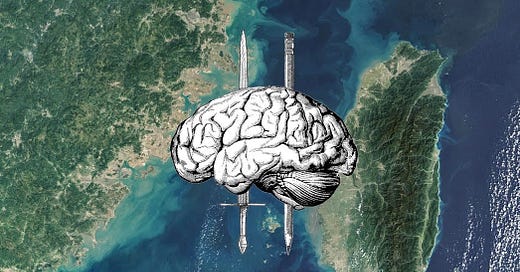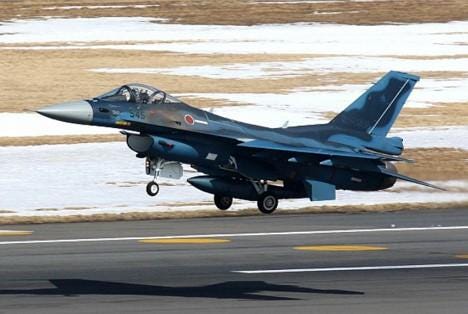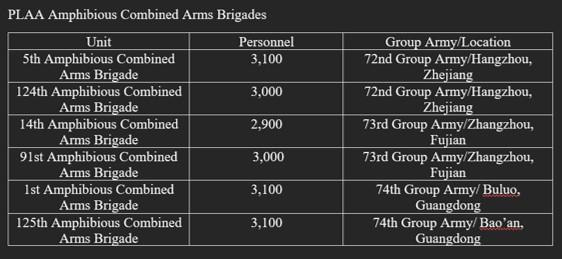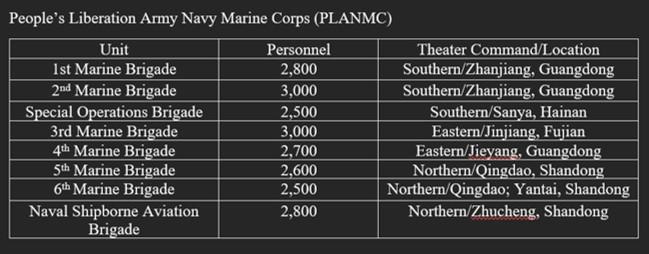Note from Lethal Minds:
This is the third of several articles feeding into our upcoming war game and crisis simulation Flashpoint Taiwan. The purpose of this simulation is to simulate a diplomatic crisis in the Taiwan Strait which triggers an invasion of Taiwan by the PLA. This simulation will feature both military practitioners and foreign affairs students and professionals.
As part of this article series, one of our writers Quantico Warfighting Society will be hosting Zoom classes to provide additional context and learning opportunities. The link to these calls will be available on our social media account.
Participants will be assigned to factions in the simulation at random, although preference to leadership positions will be given to those who interact with these articles and with the Zoom classes we will be hosting.
The next zoom class will be held at 8pm Eastern Time 12 October 2023. You can find a link to the zoom class in our bio on Instagram.
At the end of this article will be a thought exercise. We encourage you to write a brief response to that question and send it in to our email at lethalmindsjournal@gmail.com
Be informed, be prepared, be Lethal.
Dedicated to those who serve, those who have served, and those who paid the final price for their country.
The Sino Taiwanese Conflict Part Three: Forces and Regional Actors
This article will give a brief overview of the regional actors that could come to Taiwan’s aid, listing them from most likely to assist Taiwan to least likely. It will attempt to parse the forces within the region, as well as the interest of various regional actors in interceding in a war between the PRC and Taiwan. The paper will also include a general overview of the disposition of military forces in the region, including Taiwanese units located on Penghu islands and the main island. Finally, the article will also include a short list People’s Liberation Army (PLA) units and equipment that would be used in an invasion of Taiwan, ranging from PLA units to amphibious assets.
Regional Actors
Japan (Most Likely)
Japan would most likely come to Taiwan’s aid because it would view any Taiwan conflict as a threat to its continued survival as an independent nation. If China were to successfully invade and occupy Taiwan, the country would have easy access to control the sea line of communications Japan depends on for import and export trade. More importantly, China can cut off Japan from trade, such as importing energy supplies from the Gulf region or Africa. The People’s Liberation Army Navy (PLAN) could also easily access these sea lanes using its submarines from the mainland or from new bases on the island. Occupation of Taiwan by China would also bring with several People’s Liberation Army Air Force (PLAAF) bases that could threaten the Ryukyu Island Chain but also the Senkakus. There is a possibility that China could also attempt to change the status quo in both the Ryukyus and Senkakus. For example, China could take unilaterally control of the Senkakus without the potential for the Japan to intervene. China can also push for increased autonomy or independence of the Ryukyus since Japan would be in a weaker position because of the increased Chinese presence.
Japan will deploy and station elements of its Japanese Self-Defense Force in the vicinity of Taiwan during the leadup to any invasion. However, several of the bases it would use will likely be attacked by China in the initial stages of any conflict. These bases include those that are either jointly ran by Japan and the United States such as Misawa Air Base or facilities operated by Japan such as Naha Air Base. Below is partial list of units and equipment Japan could use to assist Taiwan, separated by branch:
Australia (Most Likely)
Australia would come to Taiwan’s assistance for two reasons. The most significant reason is how any successful invasion of Taiwan would change the dynamic of the Indo-Pacific region in China’s favor. An Indo-Pacific region under Chinese influence would mean that China would force its will onto countries such as Australia regarding economics, diplomacy, and international trade. Australia experienced Chinese economic coercion – in the form of tariffs and trade bans – beginning in 2020 after the country called for an independent investigation into COVID-19’s origin. China also could freely deploy submarines and other naval assets to operate in sea lanes around Australia through bases on the mainland or in Taiwan.
The vessels would have the ability to control sea traffic around Australia and potentially cut prevent the country from accessing the sea lanes. Australian support would likely consist of aerial and naval assets being forward deployed to Japan, the Philippines, or Taiwan itself. The reason why Australia would deploy aircraft and naval assets as opposed to naval assets is because of the distance but also due to prevent any public backlash from occurring. However, deployment of ground forces is also likely if the Australian government determines the deployment is viable and meets any criteria. The government would also allow the United States to operate from its bases located in northern Australia. Below is a list of units and equipment Australia could deploy during any conflict between China and Taiwan, with an emphasis on aircraft and naval assets.
The Philippines (Most Likely)
The Philippines will likely assist Taiwan to prevent China from changing the regional status quo and imposing its will onto other countries. However, the country has a more intimate understanding of this concept due to its dispute with China regarding features in the South China Sea (SCS). China’s claims over the SCS are based on historical evidence that provides its narrative that the country discovered the several of the Spratly islands since at least the late Han Dynasty. Another reason that China claims the SCS is because of the immense mineral and natural resources – such as oil and natural gas – that is projected to reside in the region. The best examples of this are the disputes with China over the Scarborough and Second Thomas Shoals. The dispute over the Scarborough Shoal began in 2012 when China seized the shoal from the Philippines after a standoff with the country. Chian maintained a constant presence at the shoal using a mixture of Chinese Coast Guard, Maritime Militia, and fishing vessels.
However, the dispute involving the Second Thomas Shoal occurred much earlier around 1997 with the Philippines running a World War II-era LST Sierra Madre aground on the shoal. The Philippines grounded the LST at the shoal to prevent China from occupying it as it did nearby Mischief Reef. China clashes with the Philippines because it wants to intimidate the country into relinquishing its claims in the region so it could more easily access the natural resources in the region. While the Philippines has a relatively small military with few modern capabilities, they would deploy some ground, naval, and aerial units to assist Taiwan. However, the biggest help the Philippines could provide is by granting the United States, Australia, Japan, and other countries permission to use its bases in northern Philippines. The units and equipment the Philippines could deploy to Taiwan or the surrounding region to conduct operations against China.
The countries listed below could possibly go either way regarding helping Tawain during a potential conflict with China. The reasons range from not wanting to get directly involved in the conflict to keeping their forces to guard against the risk of an attack by a neighboring country.
South Korea (Likely)
There are several reasons that South Korea will have in providing military assistance to Taiwan if China invades Taiwan. The United States will likely use U.S. military bases – such as Osan Air Base, Kunsan Air Base, or Camp Humphreys – in the country to conduct operations against China. China will likely attack these air bases either in the initial or early stages of an invasion to prevent the United States military from using these bases. These attacks will also strike South Korean units and equipment located at these bases, either as collateral damage or deliberate targeting. South Korea would then likely come to Taiwan’s defense. The aid would be in the form of using aircraft such as the F-35As, F-15Es, and KF-16C/Ds to conduct airstrikes against Chinese naval vessels or against ground targets in the mainland. South Korea would also deploy naval vessels – especially its Sohn Wonyil-class, Jang Bogo-class, and Dosan Ahn Changho-class submarines – to assist Taiwan. Another reason South Korea would assist Taiwan is to prevent China from gaining control of the island. South Korea’s economy is heavily dependent on international trade and on sea routes that either go through the Taiwan Strait or around the island. China would have almost complete control over these sea lanes and can make accessing them extremely difficult by regulating who and when can sail through them. It is also very likely that China would prevent South Korea from accessing them as a form of economic coercion against South Korea.
However, South Korea would likely limit any support it offers to Taiwan to humanitarian assistance and other non-military options. The reason why is because South Korea would likely want to keep its forces in the country to prevent North Korea from taking advantage of the conflict. South Korea believes that any conflict in the Taiwan Strait would increase the threat from North Korea because of the United States being distracted by the conflict with China. Another reason South Korea have in not assisting Taiwan is to prevent the conflict from either escalating or becoming a long-term conflict. The conflict would cut off South Korea from sea lines of communications it would depends on for international trade, crippling or heavily damaging the country’s economy. However, there is a possibility that China, Japan, or the United States would impose an exclusion zone around Taiwan. The exclusion zone would prevent shipping vessels from reaching South Korea via traditional sea routes would need to take longer alternative routes such as around the Japanese main island. Both the exclusion zone and the longer routes will likely mean that commercial shipping companies would stay away from entering the waters around South Korea.
India (Likely, depending on circumstances)
India’s rationale for assisting Taiwan would largely depend on the circumstances surrounding the conflict. The country understands that any conflict with Taiwan would have immense ramifications for the Indo-Pacific region, not just Northeast Asia. However, India also understands that any military assistance it could provide would likely be limited to either air or naval assets. These assets – including its carrier strike groups or submarines – would take time to arrive to the area surrounding Taiwan and would likely not have an impact on the conflict. The country would also be hesitant to provide any military assistance because it would need to keep its forces near its borders with China and Pakistan. The Indian military commissioned a study to examine the various scenarios to determine what type of assistance that it could realistically provide during a conflict. While the study is still ongoing, some of the options available to India include acting as a logistical hub for the United States and its allies to repair equipment. The logistical hub would also supply food, medical supplies, and other materials to the countries participating in the conflict. Another option is for the Indian military to conduct operations along its border with China to open another front on the conflict.
Vietnam (Likely to be Neutral)
Vietnam would remain neutral in any conflict in the Taiwan Strait because the country would not want to antagonize China by becoming involved in the conflict. The country understands that any assistance it could provide to Taiwan would be marginal for several reasons. The most important reason is most of Vietnam’s equipment – such as its combat aircraft and naval vessels – is of Russian origin. Another reason is that the country lacks knowledge on how to operate with militaries that use western fighting concepts. The Vietnamese military will face significant difficulty in integrating and operating with the countries fighting against China because of these integration issues. The third reason is that most of the Vietnam’s military bases are within striking range of the PLA arsenal of Precision Guided Munitions (PGMs). China would strike these bases such as Cam Ranh Bay or Da Nang to prevent their use by either Vietnam, the United States, and its allies.
The People’s Liberation Army (The People’s Republic of China)
The units the PLA will use during an invasion will mostly come from the Central, Eastern, and Southern Theater Commands. These units will come from all branches of the PLA, from the PLAN to the People’s Liberation Army Rocket Force (PLARF). Regarding units that will spearhead any landing operation, they will come from three sources:
The People’s Liberation Army Army (PLAA) Amphibious Combined Arms Brigades,
The People’s Liberation Army Navy Marine Corps (PLANMC) Brigades
The People’s Liberation Army Air Force (PLAAF) Airborne Corps Light Combined Arms Brigades
However, the PLA will then utilize various Combined Arms Brigades (CABs) found in the Central, Eastern, and Southern Theater Commands for follow-on operations in Taiwan. The reason why the PLA would be hesitant to use CABs from either the Western or Northern Theater Commands is due to requiring the brigades for domestic internal security. However, these brigades would be deployed to Taiwan for secondary forces if the force sustains a high number of casualties. The PLA will likely deploy some People’s Armed Police (PAP) units to Taiwan that are under Chinese control to both free up PLA units for operations. These units will also be used to install Chinese Communist Party (CCP) cadres in the areas they control.
PLAA Amphibious Combined Arms Brigades
The PLAA maintains six amphibious CABs equipped and trained to conduct traditional landing operations and will be the main effort in the Joint Island Landing Campaign. The brigades are modeled after heavy CABs but are equipped with assault guns, Infantry Fighting Vehicles (IFVs), and other vehicles designed for amphibious operations. Another important difference is that the non-amphibious CABs will support the amphibious CABs during any invasion. One important element of support is through using long-range fires from Multiple Rocket Launcher Systems (MLRS) – such as 300mm PHL03 and 370mm PCH191 MRLS) to target beaches north of the city Tainan.
Below is an outline of the six PLA amphibious CABs that China will use during any invasion of Taiwan.
People’s Liberation Army Navy Marine Corps (PLANMC)
In addition to the PLAA’s amphibious CABs, the PLAN has a Marine Corps that will be used during any invasion of Taiwan. The PLANMC expanded due to the 2017 reforms to the PLA, absorbing several former PLAA CABs and redesignating them as PLANMC units. The expansion took the PLANMC from two brigades to six reorganized combined armed battalions and flattening the chain of command similar to PLAA brigades. However, the PLANMC currently faces some deficiencies related to conducting the kind of operations associated with amphibious landings. The most important deficiency is that the new PLANMC units is still transitioning from their old roles to conducting amphibious landing operations. It would likely take years for the organization to develop the necessary experience to become competent in beach landing operations. Another deficiency is the lack of coordination between the PLAA and PLANMC during landing operations. Coordination between the PLAA and PLANMC would need to significantly improve to conduct smoother operations and to prevent high number of casualties during beach landings.
Below is an outline of the six PLANMC brigades that China will use during any invasion of Taiwan.
PLAAF Airborne Brigades
The PLAAF Airborne Corps will also be used during an invasion of Taiwan, specifically to fulfill airborne operations during the preliminary stages of the landing campaign. Specifically, the brigades will be dropped near selected sites – such as airports, seaports, and Command and Control centers – to capture or destroy them. The brigades will also be tasked to conduct offensive operations in support of beach landing operations when required by higher command. However, one key deficiency related to the corps role in any invasion is lack of aircraft required to conduct an airdrop of the size required for the operation to be successful. Another key deficiency is that overall lack of integration between the airborne brigades and the PLAA and PLANMC. Another deficiency is lack of training in real world conditions that would be comparable to the type of missions they would see during any airborne operations. The corps is made up of six airborne CABs and one air assault brigade likely divided between all five theater commands with the headquarters located in the city of Wuhan.
PLAN Amphibious Capabilities and Select Naval Assets
While the PLAN has several classes of amphibious vessels it could use to conduct an amphibious landing on Taiwan, it would still be inadequate to carry the necessary number of personnel and equipment. All the vessels combined would only be capable of carrying approximately six CABs including their equipment and necessary supplies. It also does not consider losses the amphibious forces would sustain during the landing operations the number of vessels available to carry personnel and equipment will decrease with each wave. Several of the vessels also lack the ability to conduct cross strait trips and would likely require a midway point to either refuel or take on troops. This point is especially true for the smaller classes of amphibious vessels such as the Type 067 and the Type 271 LCMs. These vessels would also have limited equipment or personnel carrying capacity comparted to the various LSTs, LPDs, or LHDs China would also use. However, the PLAN would use commercial Roll-On Roll-Off vessels and other civilian transport vessels to embark and carry the required personnel and equipment. Below is a list of the amphibious vessels the PLAN will likely use during any invasion of Taiwan.
The PLAN would also use its aircraft carriers to provide both close air support and conduct offensive/defensive air operations during the invasion. A carrier group would also be deployed to the eastern coast of Taiwan to prevent the Taiwanese military from using the area as a haven from being targeted by any PLAN/PLARF/PLAAF air or missile strikes. The carriers would also be used to support air assault missions during the first day of the invasion since the PLAN lacks the necessary number of LHAs/LHDs to support the operations. Both the Chinese Coast Guard and People’s Armed Forces’ Maritime Militia will also have a supporting role in any landing operation. Both organizations would be tasked with taking up guarding positions on the flanks and rear of the invasion force and to conduct reconnaissance missions along Taiwan’s eastern coast. They would also be tasked with ferrying and deploying special operations forces to the shoreline on the first day of an invasion.
The Military of the Republic of China (TAIWAN)
When analyzing the disposition of Taiwanese armed forces, it becomes clear that the island is split into three definitive areas of operation: Northern Taiwan with a focus on Taipei, the central coastline, and Southern Taiwan with a focus on Kaohsiung. Additionally, the countries disposition of troops is truly reflective of their defensive stature which focuses on the constant threat of invasion by the PRC. Where the United States for example may choose basing locations for a variety of reasons ranging from available training areas to surrounding infrastructure. Few would make the argument that the primary means for basing in the United States are to serve as any type of strategic positioning for defense of the country from invasion, this is not the case with regards to how Taiwan spreads its bases as each has specific tasking to defend areas of the island. The final observation drawn about the country’s military basing is that it is heavily reliant upon existing civilian infrastructure. For example, most navy bases are located within civilian deep-water ports and most airbases share the tarmac with the country’s various commercial airports. Below is a breakdown of the most significant bases Taiwan has sorted by component.
Navy
The northern end of the island is capped off by three naval bases, Tamshui located adjacent to the port of Taipei, Keelung which is northeast of Taipei, and Suao positioned on the eastern shoreline. Keelung is the larger and more significant of the naval bases in the north with the other two being limited to smaller craft. The most common of small craft naval vessels that are housed at these other ports that cannot support larger traditional warships are the Kuang Hua VI-class missile boat which are fast patrol boats at just over 100 feet long and outfitted with anti-ship missiles.
The center of the island maintains Wu Chi Naval Base on the west coast facing China and Hualien Naval Base directly opposite on the eastern shoreline bordering the Philippine Sea. Each of these ports is large enough to base ships of any size.
The southern end of the island has four naval bases all on the west coast. Anping being the most northern of the bases is located 20 miles north of the port of Kaohsiung which is the most active of all of Taiwan’s ports accounting for 70% of all imports. Tsoying Naval Base and Airfield is home to the main fleet and is only three miles north of Kaohsiung. Within the port of Kaohsiung itself is Xinbin Naval base. Ariel imagery shows that the commercial hub of the island houses many variations of warships scattered throughout the port at any given time. This is also home to the 256th Submarine squadron. The last of the southern bases is Kenting located on the southern tip of the island, a base that is not suitable for anything larger than the aforementioned missile crafts.
Additionally, there is a naval base located on the island of Penghu which is the only prominent island cluster separating Taiwan from China at roughly 30 miles from the western coastline of Taiwan.
Marine Corps
Taiwan’s Marine Corps trains for many of the same tasks associated with other country’s Marine Corps as they are outfitted to conduct ship to shore operations from small boats as well as mechanized units such as amphibious assault vehicles. Marrying up to the country’s strong defensive nature, the three Marine brigades are each assigned a sector of the island. The northern command focused on the area surrounding Taipei is the responsibility of the 66th Marine Brigade “Vanguard”. The southern area surrounding Kaohsiung is guarded by the 99th Marine Brigade “Iron Force”. The rest of the island in between the two major cities is left to the 77th Marine Brigade “Iron Guards”.
Air Force
Taiwan’s Air Force bases are evenly distributed around the perimeter of the island. Each of the base’s house a Tactical fighter wing. The 6th Tactical Fighter Wing is unique in the sense that it is dispersed to multiple locations to include the island of Penghu in the Taiwan Strait, on Kinmen Island, which is only 3 km away from mainland China, and on Taiping Island which is the largest of the natural Spratly Islands. Because airbases are likely preplotted targets to be fired upon during any opening phase of an invasion, Taiwan has placed special emphasis on hardening the structures in place to ensure survivability of their aircraft. Of note, the 5th Tactical Fighter Wing based at Chiashan Air Force Base on the central eastern shoreline is reported to be able to house over half of Taiwan’s tactical fighter aircraft in its underground hardened hangars. Central to Taiwan’s ability to fight and sustain their Air Force past the opening stages of a conflict is their use of deception through constant movement of units between bases as well as flexibility to land, rearm, and refuel on highways when airstrips become unusable.
Army
Like the ROC Marine Corps composition with regards to having predetermined areas of operation, the Army is split into three Corps. Each of the Corps is comprised of armor, infantry, artillery, and mechanized brigades. There is very little army presence on the eastern shoreline with only the 15th Infantry Brigade residing east of the Central Mountain Range. The northern area of operations is maintained by the 6th Army Corps based out of Zhongli, with the 10th Army Corps defending the center of the island, and the 8th Army Corps fending for the southern portion of the island.
Below are some articles that contain more information about the units discussed in the article1:
https://digital-commons.usnwc.edu/cgi/viewcontent.cgi?article=1018&context=cmsi-maritime-reports
https://digital-commons.usnwc.edu/cgi/viewcontent.cgi?article=1019&context=cmsi-maritime-reports
https://digital-commons.usnwc.edu/cgi/viewcontent.cgi?article=1014&context=cmsi-maritime-reports
https://www.aspistrategist.org.au/defence-review-must-examine-australias-amphibious-basing-quandary/
https://cove.army.gov.au/article/force-sea-australias-amphibious-capability-update
TDG:
What capabilities – such as equipment or capabilities they excel at – would each country outlined in the scenario bring in terms of assisting Taiwan?












